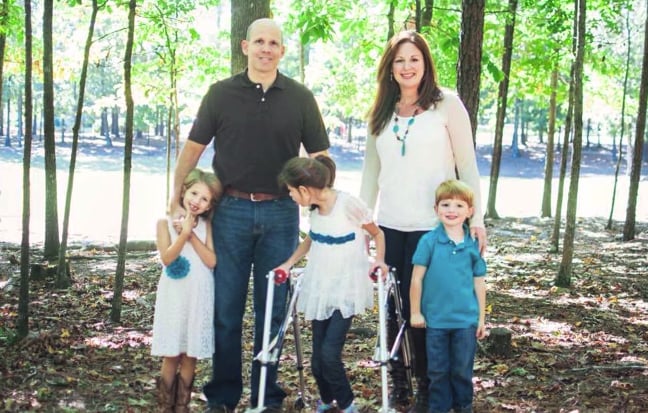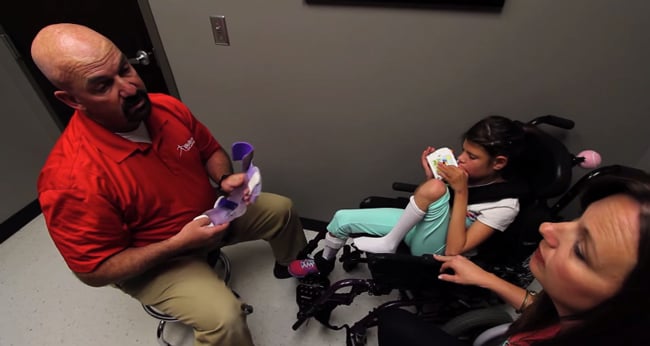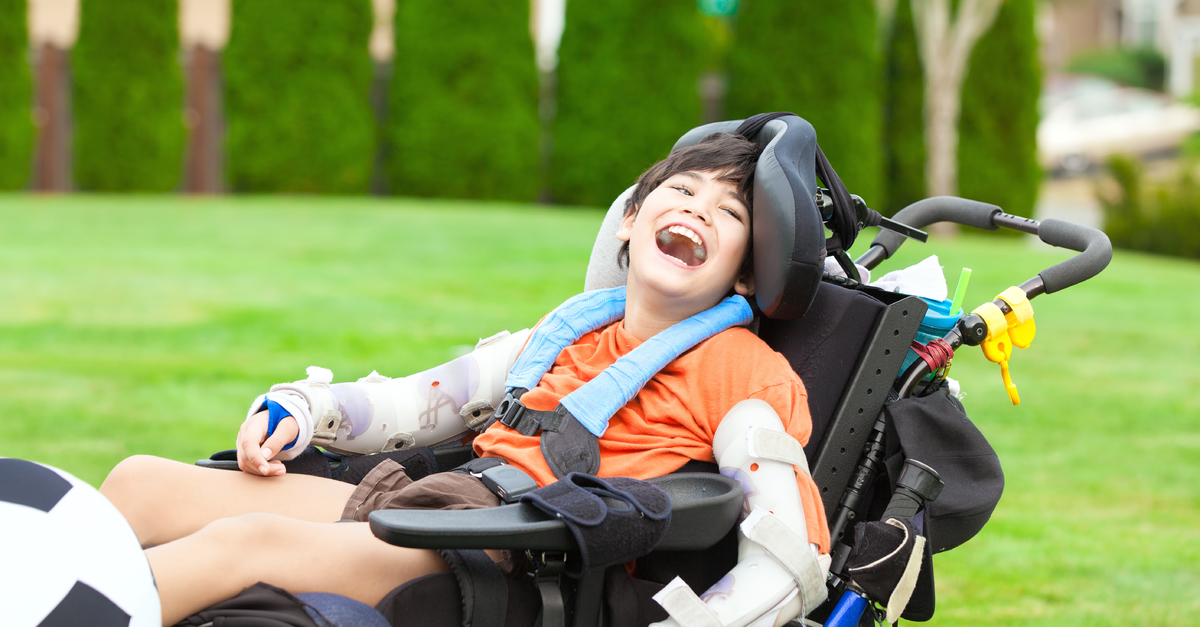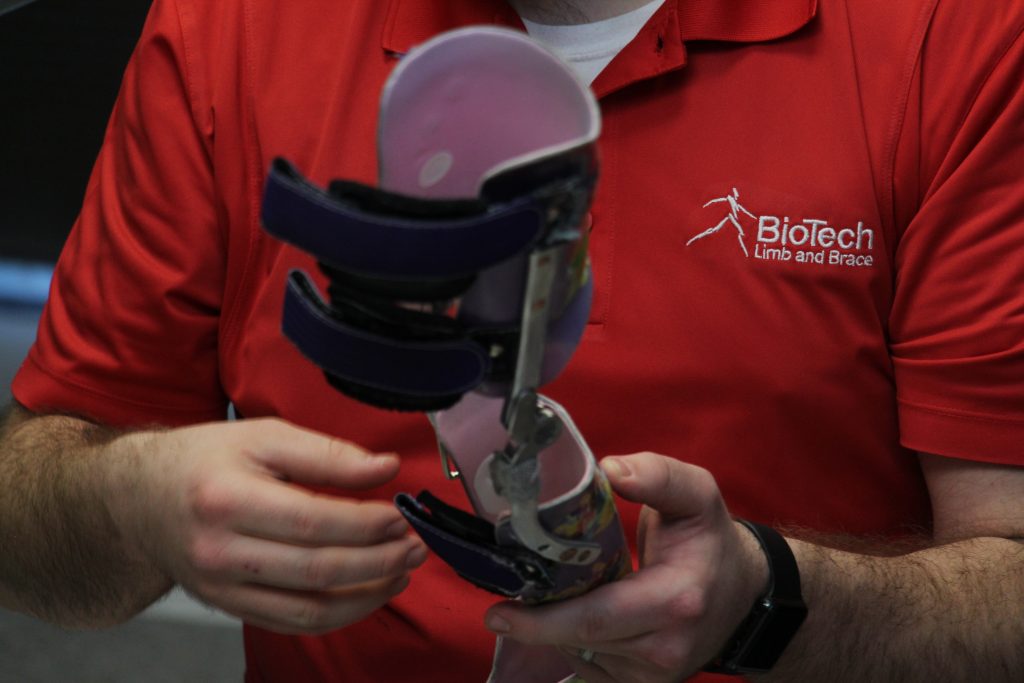Every year, roughly 10,000 infants and preschool age children are diagnosed with cerebral palsy, a neurological disorder that can impact the motor skill, movement, and muscle tone of the child.
There is treatment for cerebral palsy, though, in the form of braces and orthotic devices that help kids with cerebral palsy move around better than they’d otherwise be able to. With the right device, it’s even possible for a kid to walk.
Here’s what families need to know about finding braces and orthotic devices for children who are impacted by cerebral palsy.
Getting the Right Type of Orthotic Device
There are two different types of orthotic device: accommodative and functional. Accommodative orthotic devices are essentially over-the-counter devices that are prefabricated. They do provide some moderate support, but they’re not designed with the individual patient in mind.
Functional devices, on the other hand, are custom-built for the patient and are designed to provide more support to the child’s biomechanics. These types of devices are the best form of mobility aids for kids with cerebral palsy.
Building the Best Device
Cerebral palsy orthotic devices and braces are made of a variety of materials, ranging from carbon fiber to hard plastic, metal, rubber, or some combination of materials. They can be built in a variety of configurations, such as for the foot, as an ankle-foot orthosis (AFO), a knee-ankle-foot orthosis (KAFO), or even a brace running from the feet all the way to the torso.
We build the best braces by first taking detailed measurements of our patients. Then, we fabricate a device with durable materials and adjust the device until it it is a proper fit. But, each device has to be adjusted as the patient grows, which means the family will come to depend on a caring and friendly orthotist who can ensure the device remains effective as the child ages.
With proper care from an orthotist and a physical therapist, it’s possible for children with cerebral palsy to gain independence, mobility, and a better quality of life.
BioTech designs and manufactures orthotic devices for children suffering from cerebral palsy. We treat every patient with compassion and respect, and we work hard to deliver superior service and prosthetic devices that change lives. Recognize your possibilities. Contact us today for more information.
Spina bifida is an uncommon birth defect that means the spinal cord and the spine didn’t form the right way during pregnancy. This defect affects roughly 1,500 babies in the U.S. each year and can range from mild to severe, with many forms resulting in mobility and orthopedic issues.
One common problem that comes from spina bifida is difficulty walking. Sometimes, the nerves in one or both legs don’t work as they should, resulting in weak muscles and even paralysis. Some can still learn to walk; some can’t. It really depends on the severity of the condition in that child.
There are other issues that can result, too. For example, patients with spina bifida can develop scoliosis (a curved spine), deformities in the bones and joints, and other orthopedic symptoms.
Many spina bifida patients find that in order to walk and move like they want, they need orthoses or braces. Braces can help shore up the weak parts of the body and provide much-needed structure and stability to the leg(s), giving the patient a chance to live a normal life.
Here, we’ll talk about braces for spina bifida patients, including how they work and how you can build a better one.
Types of Spina Bifida Braces
Supra-Malleolar Orthosis (SMO)
This type of orthosis supports the leg from the foot to right above the ankle bones. Ankle bones are called malleoli, hence the name of the device. This is a shorter version of an AFO (below).
Ankle-Foot Orthosis (AFO)
This brace supports the foot and extends past the ankle to midway up the calf. An AFO’s purpose is to control the range of motion of the ankle and offer support to the lower leg. AFOs are also known as “foot-drop braces” because they’re often used to support a dropped foot.
Knee-Ankle-Foot Orthosis (KAFO)
Similar to an AFO, the KAFO extends up past the knee, which makes the device the more complex of the two. In spina bifida patients with more moderate to severe mobility issues, a KAFO is often needed because the entire leg has reduced feeling, strength, and movement.
Reciprocating Gait Orthosis (RGO)
The most complicated of the four types of orthotic braces, the reciprocating gait orthosis involves full-leg braces combined with a rigid pelvic band around the hips, connected by a cable. When the wearer flexes a hip joint, it allows them to move forward with the opposite hip and leg. So when they flex to the right, the left hip and leg move, and vice-versa. This is a fairly recent innovation and is most often used in spina bifida patients who have suffered partial or total paralysis of the lower body.
The Process of Building a Better Brace: Getting a Better Fit
There are a lot of factors that go into creating an optimal brace for spina bifida patients. The materials you use can make a big difference, which is why we use advanced carbon-fiber technology.
But the best way to build a better brace is to get a better fit. A perfect fit makes a world of difference to patients who have to wear their brace for long hours each and every day, depending on it to walk and be active. The average person will take 5,000 to 7,000 steps a day, and each of those steps can be uncomfortable at best and painful at worst with an improperly-fitting brace.
To ensure a better fit, we use technology to help us. First, we take exact measurements, then create a fiberglass cast of the limb. Laser scanning can help us do the same as a fiberglass cast, except we can upload the design into our special software and manipulate the future brace as needed right there on the computer, before we create it. Laser scanning is really powerful and can help create an exact fit.
Then, through careful manufacturing, we can craft a brace that perfectly fits the limb and provides superior comfort.
Since most patients with spina bifida we see are children, making sure the brace is adjusted properly to a growing child is important. On average, children can expect to be fitted for a new brace or modifications on their existing brace about once per year until they reach adolescence. Then, new braces can be created less frequently.
Through it all, we’re focusing intently on creating the best fit possible, because that is the single biggest factor of how successful a brace will be.
Finding the Best Brace for Your Patient
If you have a child who has spina bifida and you need help taking care of their orthopedic needs, contact us. We have decades of experience creating orthotic braces for spina bifida patients and any other child who needs help walking properly. Walking isn’t something we ever take for granted. With your child, we’ll do everything we can to give them the gift of normalcy and activity - something every kid needs.
In November of 2003, Cindy Crook went into labor at only 32 weeks pregnant. She had a beautiful daughter, Mary Kathryn, that she affectionately calls Katy. As Katy got older it became evident that she was experiencing neurological delays.
One of her biggest struggles was walking. Cindy was committed to doing everything possible to help her daughter. She made the decision to contact Eric at BioTech.
BioTech Fitted Katy with a Custom Brace
Cindy brought her daughter to BioTech and Eric casted her foot. He was then able to create a brace that fit her perfectly. Thanks to the support of the brace, Katy was able to walk with assistance. For several years, this was an effective solution.
Getting Older Presents New Challenges
 Now that Katy is 11 years old, walking has become more difficult. She is taller and bigger. This makes it a much bigger challenge to continue walking. Understandably, this has been really tough for Cindy. It’s hard, as a parent, to see your child wanting to walk and collapsing because she’s simply not able.
Now that Katy is 11 years old, walking has become more difficult. She is taller and bigger. This makes it a much bigger challenge to continue walking. Understandably, this has been really tough for Cindy. It’s hard, as a parent, to see your child wanting to walk and collapsing because she’s simply not able.
Now, more than ever, Cindy is dedicated to giving her daughter every resource necessary to walk. She says,”As long as she can take that one step, I’m going to continue to push her. I’m not going to give up until she absolutely won’t do anymore.”
It’s Personal with BioTech
When Cindy expressed her concerns to Eric at BioTech, he was completely supportive. He told her,”I’ve got your back” and assured her that he is going to do everything he can to help Katy continue to walk.
For Eric, this isn’t just a job. It’s very personal to him. He grew up with a sister who had special needs due to cerebral palsy. Because of his own experiences, he takes his job very seriously and is committed to providing the highest quality service to help families like the Crook family.
Do You Need Orthotic or Prosthetic Services? Contact BioTech Today!
If you need orthotic or prosthetic services and want a company that won’t give up until you have the best possible solution, contact BioTech today.
At BioTech, our patients become our family. Join our family today and learn how we can help you achieve your possibilities!

